 Animals
Animals  Animals
Animals  History
History 10 Most Influential Protests in Modern History
 Creepy
Creepy 10 More Representations of Death from Myth, Legend, and Folktale
 Technology
Technology 10 Scientific Breakthroughs of 2025 That’ll Change Everything
 Our World
Our World 10 Ways Icelandic Culture Makes Other Countries Look Boring
 Misconceptions
Misconceptions 10 Common Misconceptions About the Victorian Era
 Mysteries
Mysteries 10 Strange Unexplained Mysteries of 2025
 Miscellaneous
Miscellaneous 10 of History’s Most Bell-Ringing Finishing Moves
 History
History 10 Great Escapes That Ended Right Back in Captivity
 Weird Stuff
Weird Stuff 10 Fascinating Things You Might Not Know About Spiders
 Animals
Animals 10 Animals That Humiliated and Harmed Historical Leaders
 History
History 10 Most Influential Protests in Modern History
 Creepy
Creepy 10 More Representations of Death from Myth, Legend, and Folktale
Who's Behind Listverse?

Jamie Frater
Head Editor
Jamie founded Listverse due to an insatiable desire to share fascinating, obscure, and bizarre facts. He has been a guest speaker on numerous national radio and television stations and is a five time published author.
More About Us Technology
Technology 10 Scientific Breakthroughs of 2025 That’ll Change Everything
 Our World
Our World 10 Ways Icelandic Culture Makes Other Countries Look Boring
 Misconceptions
Misconceptions 10 Common Misconceptions About the Victorian Era
 Mysteries
Mysteries 10 Strange Unexplained Mysteries of 2025
 Miscellaneous
Miscellaneous 10 of History’s Most Bell-Ringing Finishing Moves
 History
History 10 Great Escapes That Ended Right Back in Captivity
 Weird Stuff
Weird Stuff 10 Fascinating Things You Might Not Know About Spiders
10 Deathbed Confessions And Conversions That Went Horribly Wrong
The moment before death is often one of truth. Some dying people use that time to correct their errors (at least the ones they can correct), appreciate their loved ones, and cherish their best moments. They may also reveal their deepest secrets and greatest regrets and align their beliefs.
We have seen dying people do all these things. However, some admissions have turned controversial—especially when it involves the revelation of a secret—after the person survived. Imagine confessing to a murder in front of the cops when you think you are dying but you end up surviving.
Other confessions have become contentious after the dying individuals supposedly took on new faiths. They did die, but the supposed deathbed conversions often caused controversies that lingered on long after they were gone.
10 James Washington
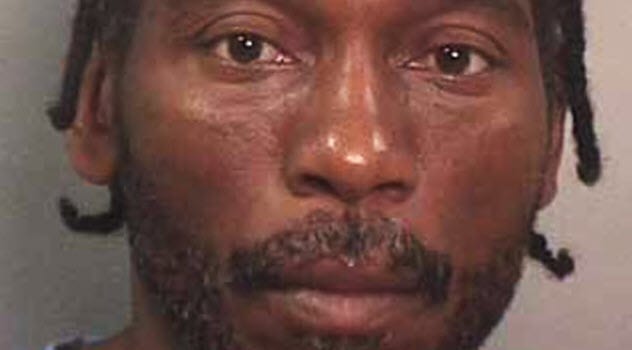
In July 1995, firefighters discovered the charred remains of a woman in an empty home in Nashville, Tennessee. Police later identified the woman as 35-year-old Joyce Goodener, who had been stabbed and beaten to death. Afterward, the murderer had placed her body in a rug before setting it on fire.
Police arrested James Washington for the murder. He knew Joyce and even admitted that he saw her on the day she died. However, police could not pin the murder on him as there was no DNA evidence at the crime scene.
Things changed in 2009 when James Washington suffered a heart attack while serving a 15-year sentence for attempted murder. Fearing that he was going to die, Washington called a nearby guard, James Tomlinson, and confessed to the 1995 murder.
Things went south for Washington when the heart attack didn’t prove fatal. Tomlinson informed authorities about the confession, and Washington was charged with murder. Washington recanted the confession and claimed that he was hallucinating at the time. Unfortunately, it was too late. He was convicted of murder and sentenced to life imprisonment.[1]
9 Tony Wakeford
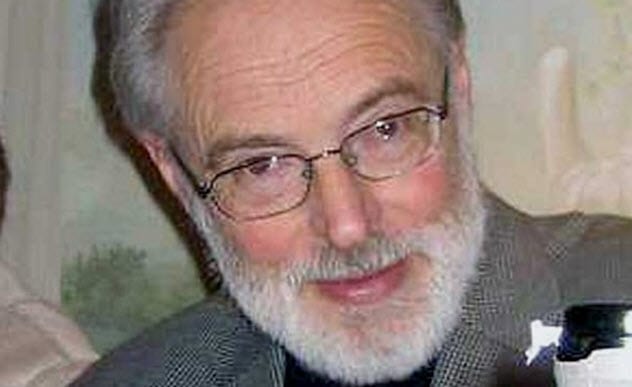
In 2006, Tony Wakeford suffered a life-threatening illness caused by Parkinson’s disease. Thinking he was going to die, he called his wife, Patricia, and confessed to having an affair with her best friend. Patricia did not complain and patiently listened to all he had to say. Death was near anyway, she probably thought.
They were wrong! Tony survived.
However, Patricia could not contain the pain of betrayal by her husband. This came to a head on September 4, 2010, when she murdered him in their Effingham, Surrey, home. Afterward, she called 999 and claimed that her husband had attacked her during a fight. Police arrived to find Tony’s remains. He had multiple stab wounds on his arms, hands, and legs.
However, the one that proved fatal was delivered straight into his heart. Patricia insisted that Tony had attacked her first even though investigators believed that she had murdered Tony in a fit of jealousy. A neighbor also told investigators that he had heard Patricia repeat the words “I hate you” for about 10 minutes on the day before the murder.[2]
Patricia was arrested for murder. However, she got lucky after the court reduced the charge to manslaughter. She received a 582-day sentence but was freed because she had already spent 291 days in prison.
8 James Brewer
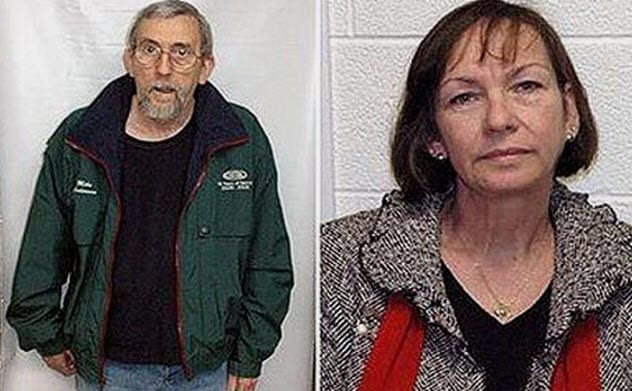
In 2009, “Michael Anderson” suffered a stroke that he believed was going to kill him. At the hospital, he revealed that he was actually 58-year-old James Brewer. He had changed his name around 30 years earlier after he was declared “wanted” in Tennessee for the murder of his neighbor Jimmy Carroll.
James shot Carroll to death outside a gas station over suspicions that Carroll was trying to have an affair with James’s wife, who later changed her name to Dorothy Anderson. James Brewer was arrested for the murder but fled with his wife right after he was released on bail. They went to Oklahoma, where they changed their names and started to live a new life.
James told the police that he had decided to confess because he wanted to “cleanse his soul” before dying. James was so sure that his time was up that he even told his wife to stop interfering when she tried to halt his confession. Fortunately for justice, James survived the stroke and was charged with murder.[3]
7 Unidentified 91-Year-Old Man
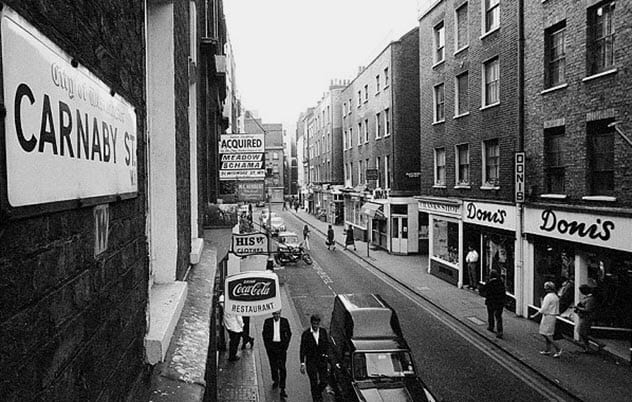
In 2015, a 91-year-old British man living in Canada confessed to murdering a woman outside a nightclub on Carnaby Street, Soho, UK, in 1946. This is considered the longest period between a crime and confession in British criminal history.
The unidentified man offered the confession at a Canadian police station right after he was diagnosed with cancer. Canadian officers informed the British police, who promptly sent investigators to interrogate the man. The victim was a prostitute whose name the British man could not recall. However, he remembered that he had shot her to death with a pistol.
When British officers showed him pictures of several women, the man identified his victim. She had been a 26-year-old prostitute called Margaret Cook. Police had never arrested a suspect in Cook’s murder even though the man had remained in Britain for five years before relocating to Canada.
Canadian police offered to extradite the man to the UK. However, Canadian judges refused to honor the extradition because the man was too old. They also thought that a trial was unnecessary because the murder would have remained unsolved if the man had not confessed.[4]
6 Jeffrey Gafoor
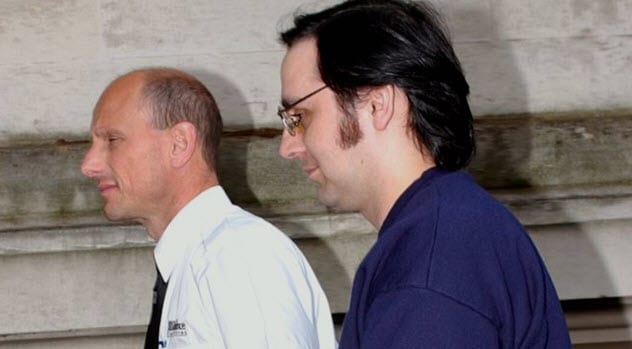
In 1988, British police found the remains of a gruesomely murdered woman in a flat in Cardiff, UK. The woman had over 50 stab wounds on her body. She was later identified as a 20-year-old prostitute called Lynette White.
In 1990, Tony Paris, Yusef Abdullahi, and Stephen Miller received life sentences for the murder. However, they were released two years later after advancements in DNA technology proved they were innocent. A few years later, police turned their radar on a man called Jeffrey Gafoor. DNA tests soon proved that Gafoor was the real murderer.
In 2003, the 38-year-old Gafoor somehow realized that he was under police surveillance. He visited several stores where he purchased large amounts of paracetamol tablets. He swallowed the tablets when he returned home that night. Police broke into his home at that moment and arrested him.
Gafoor confessed to the murder as an ambulance transported him to a hospital. He added that he had been awaiting capture for 15 years and really wanted to die. Gafoor was already convulsing when he arrived at the hospital, and for once, it seemed like he was really going to die. That never happened, and he went on to make a full recovery.
Gafoor did not recant his confession. However, he said he was no longer interested in dying and was prepared to face the consequences for his action. He added that he had previously considered death to discover if God and the devil really existed.
Gafoor confessed that he had murdered White during an argument over £30. He received a life sentence and had to spend 13 years in prison before he could be considered for parole. However, he is still in prison as his parole requests were rejected in 2016 and 2018. He is eligible to file a third parole request in 2020.[5]
5 Shaun

In 2018, a cancer patient at Auckland City Hospital in New Zealand informed a doctor that he had some confessions to make. He added that he would only disclose the information on the condition that the doctor promise never to tell anyone else. The doctor agreed.
The man—identified only with the pseudonym “Shaun”—claimed that he had been a gun for hire who was responsible for several murders across New Zealand in the 1960s. The unidentified doctor later encouraged Shaun to write a confession for the police in case he died. It is unclear if Shaun wrote that letter.
The doctor kept the secret anyway. However, police learned about Shaun after several medical and law researchers published a paper discussing the moral and legal consequences of keeping such secrets. The paper generated a controversy that split medical practitioners into two groups. One supported the doctor who kept the secret, while the other wanted the doctor to reveal it.
The supportive group noted that secrets should never be revealed because they are considered a sort of bond between doctors and their patients. The group also mentioned that Shaun’s condition improved after the confession. He was able to walk and eat—two things he could not do before the confession. His health also improved significantly, and doctors even had to reduce the amounts of painkillers he received.
In fact, Shaun was discharged and sent to a nursing home for palliative care, which is reserved for dying people. Doctors consider patients in palliative care to be terminally ill. Their care is focused on making their deaths less painful. Shaun later died.[6]
4 Bjorn Ironside

Bjorn Ironside is a legendary figure, although his existence remains in doubt. He was supposedly a Viking king who ruled what is now Sweden sometime in the ninth century. He also doubled as a raider and frequently organized surprise attacks into cities that would now be located in Europe and North Africa.
One of his most infamous raids occurred when he partnered with another Viking called Hastein to attack the Italian city of Luni, which they mistook for Rome. The raid started with a siege. However, the duo quickly realized that the city was well defended against assault. So they decided to trick their way in.
Sources say that either Bjorn or Hastein sent a message to the local bishop in Luni, claiming that Bjorn was on his deathbed and wanted to convert to Christianity. Other sources say that Bjorn actually feigned death and had requested a Christian burial earlier.
Whichever is true, the bishop of Luni agreed and allowed some Viking pallbearers to carry Bjorn’s body into Luni. Once there, Bjorn leapt out of his coffin and fought his way to the city gates alongside the Viking soldiers disguised as pallbearers. However, they soon realized that they had attacked the wrong city.[7]
3 Charles Darwin
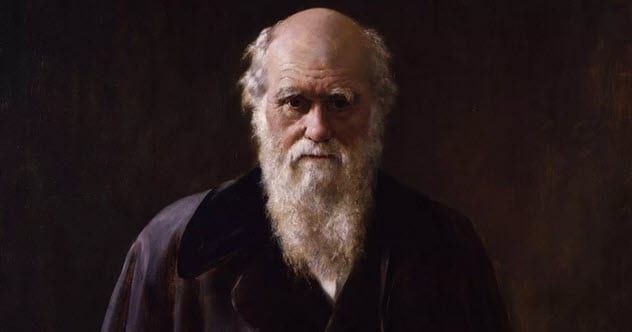
Charles Darwin died in April 1882. Soon after, there were rumors that he had converted to Christianity just before his death. The first such claims were made during a sermon delivered by one Mr. Huntingdon.
Darwin’s deathbed conversion is a big deal because he proposed the theory of evolution. The theory pitched him against religionists who believed that God had created the world and everything within. This is the creationist theory. The creationist and evolutionist theories cannot both be true—at least not totally. One has to be false or only partially true for the other to be true.
Elizabeth Reid Cotton (aka Lady Hope) reignited the rumor in 1915 when she declared that Darwin had really converted. Cotton claimed that Darwin was reading a Bible when she visited him at his home. Darwin was gravely ill at the time and bedridden. Cotton added that he had told her to return to share a sermon with the servants in his home.
Darwin’s family continued to deny every story that Darwin converted on his deathbed. His daughter Henrietta was with him at the time of his death and never saw him convert. His wife, Emma, added that he would have never converted. While they agreed that Cotton did visit Darwin, they said that it was seven months before his death. Darwin was not bedridden at the time.[8]
2 King Louis XV

King Louis XV was one French king with great taste in women. He became king at age five and married his wife, Queen Marie Leszczynska, when he was just 15. He soon got tired of the queen and found several mistresses to satisfy his sexual urges.
King Louis XV had his mistresses live in the same palace that he shared with his wife. The mistresses resided in different apartments that were linked to the king’s bedroom by a secret staircase. The mistresses used that staircase whenever the king requested their services.
The king’s philandering ways almost came to an end after he was stabbed by Robert-Francois Damiens on January 5, 1757. Thinking he was dying, King Louis XV was rushed to his palace where he confessed his infidelity to Queen Marie and promised to reveal more details if he ever recovered. He did get better, but there is no mention that he made more confessions or dumped his mistresses.[9]
1 Sir Allan Napier MacNab
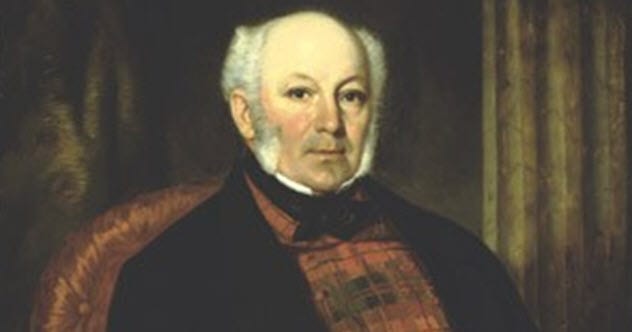
Sir Allan Napier MacNab was a controversial politician in early Canadian history. He was a jack-of-all-trades as he dabbled in business, acting, carpentry, land speculation, and law during his eventful life. He also briefly worked as a soldier and even fought in the War of 1812.
MacNab’s life was filled with controversies, which continued after his death. He owed lots of debt, leaving his creditors to fight over the few properties he had left. However, the greatest dispute involved his faith. MacNab was a renowned Anglican even though his wife and daughters were sworn Catholics. The controversy began after Sophia Stuart, his sister-in-law, declared that he had converted to Catholicism on his deathbed.
The Anglicans refuted the claims and insisted that MacNab had died and must be buried an Anglican. They added that the supposed conversion was impossible because MacNab was unconscious at the time of his death. The Catholics won, and MacNab received a Catholic burial. However, the disagreement left the family divided.[10]
Read about more fascinating deathbed confessions and famous last words on Top 10 Fascinating Deathbed Confessions and 20 Famous Last Words.








